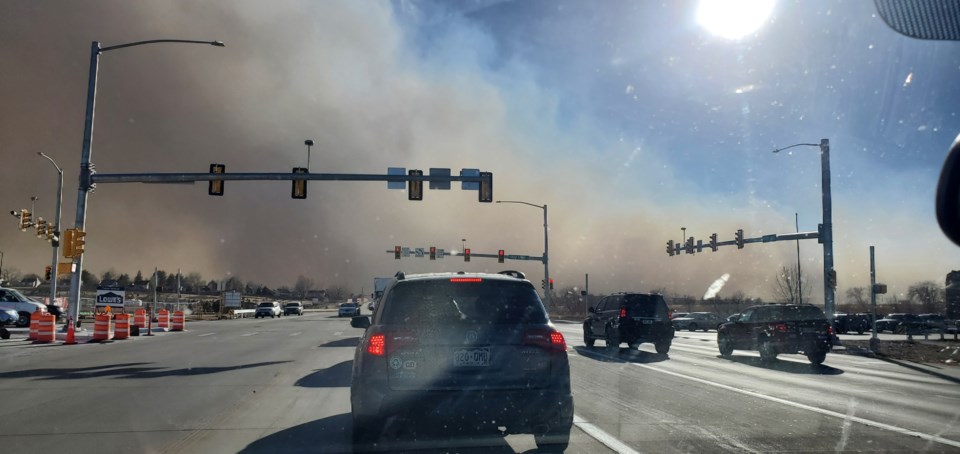Starting this summer, Boulder County will require ignition resistant construction materials for new homes and structures on the plains side of the county.
On Thursday, the Boulder County commissioners unanimously approved expanding some construction standards already in place on the western side of the county to include the eastern side as well. These changes are only applicable in unincorporated Boulder County.
Boulder County has two wildfire zones split along Foothills Highway, with Zone 1 covering the mountainous and fire-prone areas to the west and Zone 2 covering the plains along with the majority of the county’s structures.
The Boulder County Building Code previously adopted comprehensive ignition resistant construction requirements on the western side of the county, but the Marshall fire’s destruction of 150 parcels in unincorporated Boulder County prompted this update for the eastern half.
“We know that we are going to have grass fires again,” Chief Building Official Ron Flax said to commissioners. “The question is what do we do to increase the likelihood that similar events are not going to cause the same level of catastrophe that this event caused.”
The update to the current code is meant to ensure a minimal level of ignition resistance for structures in Zone 2. The biggest change will be the requirement of Class A roofing materials, which was previously Class B for Zone 2, along with ignition resistant gutters, eaves, exterior walls and decks.
Boulder County staff attempted to estimate the cost differences with these regulations, though the current market makes that difficult. According to their estimate, some ignition resistant materials, like exterior walls, actually cost less while others are comparable or just slightly higher in prices.
The commissioners decided to expand these requirements to detached accessory structures in Zone 2 as well, which is actually stricter than the current regulations for these structures in Zone 1. Detached accessory structures in Zone 1 do not have the ignition resistant requirements, though staff plans to bring a proposal to update that soon.
Homes in Zone 2 will need a minimum three foot non-combustible perimeter. The new regulations for Zone 2 do not include the Zone 1 requirements related to windows, doors and defensible space, which would have more of a cost burden than the other changes.
The updates are not retroactive, so they do not apply to current properties, but a homeowner looking to redo their roof or deck would be subject to these standards. Flax added that a pilot program with Wildfire Partners, Boulder County’s wildfire mitigation program, will soon launch to expand property owner education about the fire risk of their existing homes countywide.
Commissioners expressed their gratitude for staff’s quick work, just months after the Marshall fire, to update these regulations.
“We’re just in a different reality now and it’s just so critical we learn from these things,” Commissioner Matt Jones said. “... Preventing somebody from losing a house is so much better than trying to fix it afterwards. I’m so supportive of this and excited. I think we should be doing this statewide.”
Commissioner Claire Levy echoed Jones’ statement, emphasizing her desire to see other counties on the plains or the state to adopt similar construction standards.
“My hope is that by Boulder County taking this action, more counties that are here on the plains — that never thought that they would have this kind of incredible destruction — will follow us,” she said. “Maybe this is a pathbreaking action of ours that can set a new standard and perhaps encourage the legislature to take the steps that they need to take.”
Flax said more building code updates are on their way in relation to wildfire preparation and prevention. He added there will also be consideration of construction practices and upfront carbon emissions of materials.
“What we’re still struggling with here and why the wildfire problem has been steadily increasing is because of a destabilized climate,” he said. “We want to make sure our solutions for the wildfire problem is also a solution that will slow down the rate at which we’re destabilizing our climate.”
As part of the review process, on Feb. 4 the county temporarily suspended issuing building permits for new structures and certain additions in areas of Zone 2 not affected by the Marshall fire. The pause is in place through June 6, when the new requirements go into effect.
The pause does not apply to property owners who commit to rebuild to the requirements adopted as Appendix A of Article 19-500 of the Boulder County Land Use Code.



